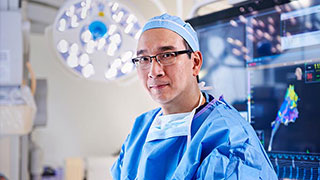Search for opportunities to participate in a muscle or bone research study.
Minimally Invasive Surgery
New Patient Appointment or 214-645-8300
MedBlog
Results: 5 Locations
Multidisciplinary Surgery Clinic
at Outpatient Building 1801 Inwood Road, 7th Floor, Suite 100Dallas, Texas 75390 214-645-2900 Directions to Multidisciplinary Surgery Clinic Parking Info for Multidisciplinary Surgery Clinic
James W. Aston Ambulatory Care Center
5303 Harry Hines Blvd.Dallas, Texas 75390 214-645-8300 Directions to James W. Aston Ambulatory Care Center Parking Info for James W. Aston Ambulatory Care Center
3 Clinics at this location
Orthopaedic and Sports Medicine Programs
at UT Southwestern Medical Center at Richardson/Plano 3030 Waterview Parkway, 1st FloorRichardson, Texas 75080 972-669-7000 Directions to Orthopaedic and Sports Medicine Programs
Pediatric Urology
at UT Southwestern Pediatric Group at Plano 7609 Preston Road, 3rd FloorPlano, Texas 75024 469-497-2501 Directions to Pediatric Urology Parking Info for Pediatric Urology
UT Southwestern Medical Group at North Dallas - Ophthalmology
12606 Greenville Avenue, 1st Floor, Suite 180Dallas, Texas 75243 214-645-0950 Directions to UT Southwestern Medical Group at North Dallas - Ophthalmology













